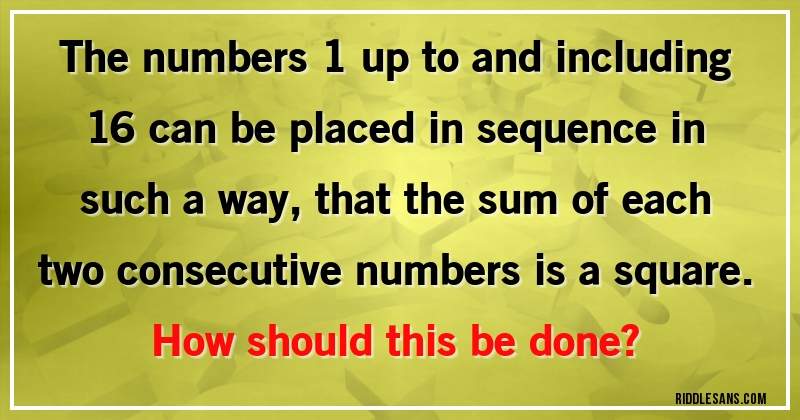The numbers 1 up to and including 16 can be placed in sequence in such a way, that the sum of each two consecutive numbers is a square.
How should this be done?
We first look with which numbers each number can form a pair of which the sum is a square:
Number:
Number 1 Square pairs: 1+3
1+8
1+15
Number 2 Square pairs: 2+7
2+14
Number 3 Square pairs: 3+1
3+6
3+13
Number 4 Square pairs: 4+5
4+12
Number 5 Square pairs:
5+4
5+11
Number 6 Square pairs:: 6+3
6+10
Number 7 Square pairs: 7+2
7+9
Number 8 Square pairs: 8+1 Number 9 Square pairs: 9+7
9+16
Number 10 Square pairs: 10+6
10+15
Number 11 Square pairs: 11+5
11+14
Number 12 Square pairs:12+4
12+13
Number 13 Square pairs:13+3
13+12
Number 14 Square pairs:14+2
14+11
Number 15 Square pairs:15+1
15+10
Number 16 Square pairs:16+9
As can be seen, there are two numbers that can form a pair in only one way: 8 and 16. Therefore, these two numbers need to be at the start or at the end of the sequence. If we start with the number 16, the sequence follows almost automatically: 16 9 7 2 14 11 5 4 12 13 3 6 10 15 1 8. Of course, the reverse sequence is also a possible solution.
